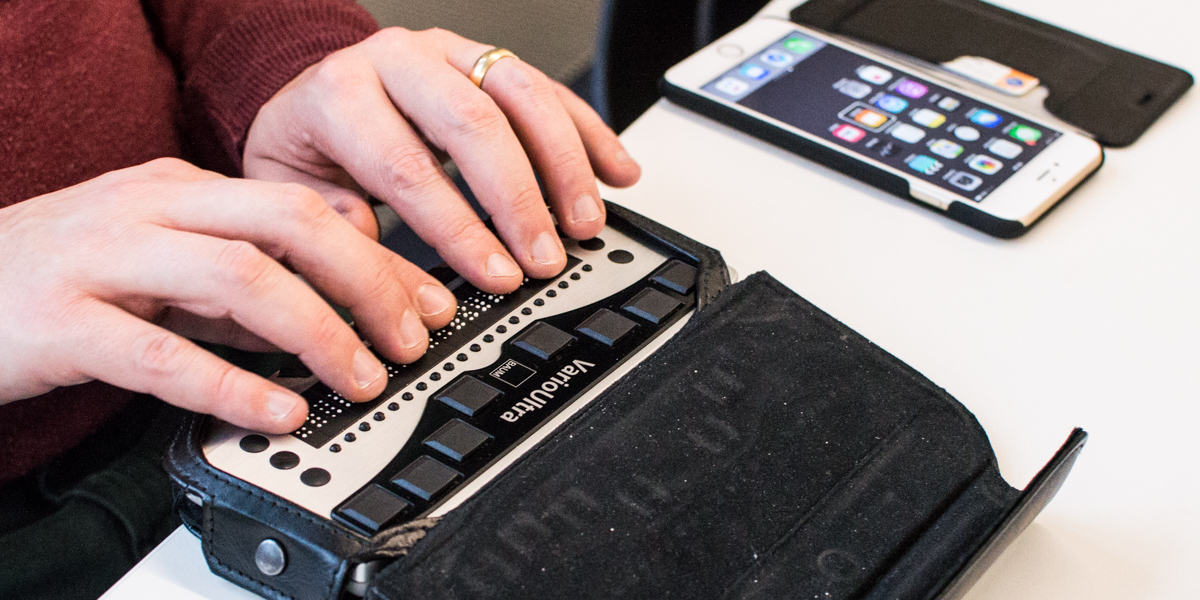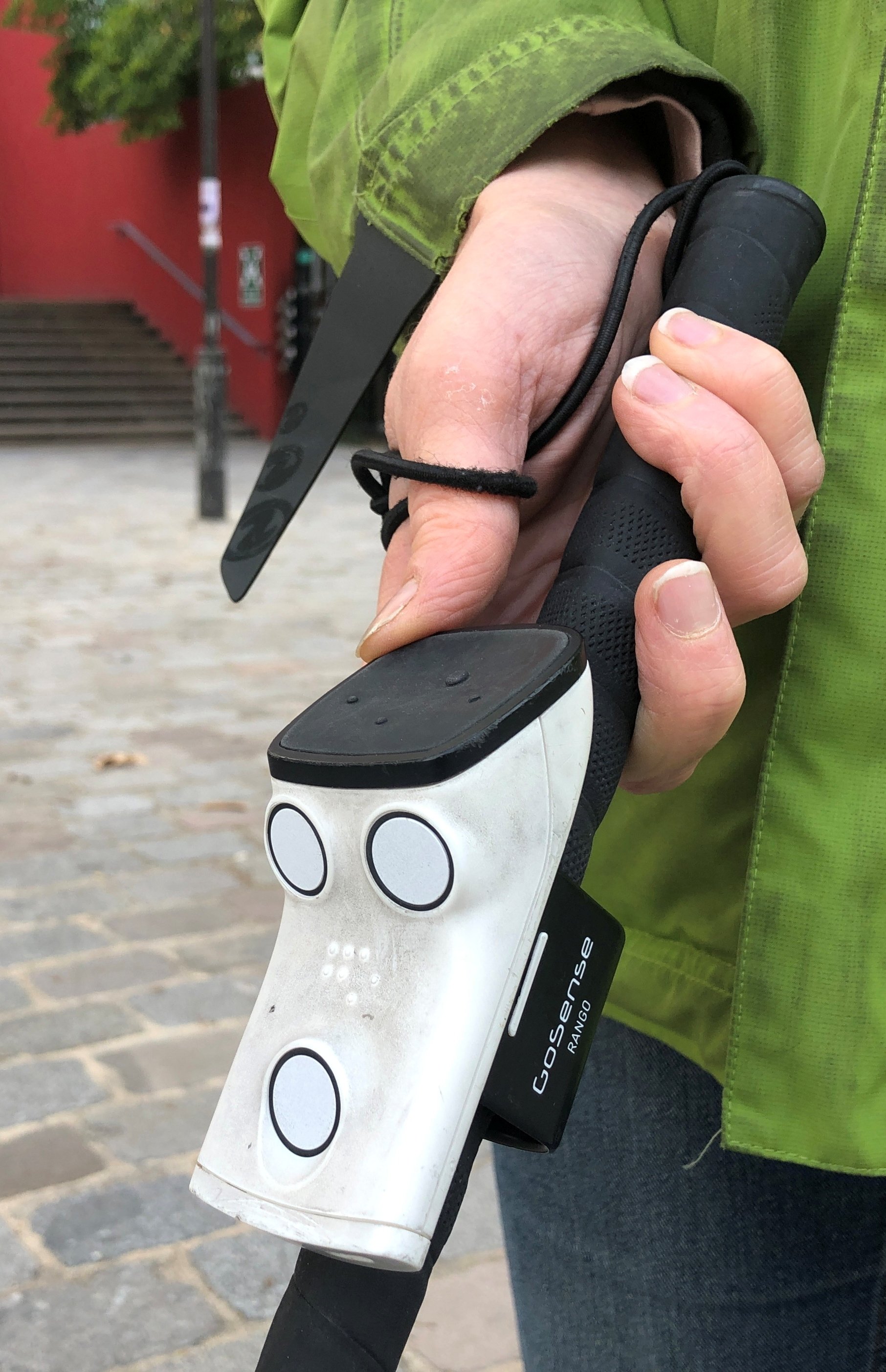AI-Powered Visual Aids: Transforming Support for the Blind
AI-Powered Visual Aids: Transforming Support for the Blind
Blog Article
Empowering Independence With Assistive Modern Technology for the Blind
The assimilation of assistive innovation right into the lives of individuals with visual impairments stands for a considerable advancement in advertising independence and self-sufficiency. From ingenious display visitors to advanced clever walking canes, these tools not just improve everyday navigating and communication yet also equip users to involve meaningfully in different aspects of life. As we explore the myriad advantages and real-world applications of these modern technologies, it becomes critical to take a look at the hidden aspects that add to their efficiency and the potential for future advancements in this vital area.
Summary of Assistive Innovation

The advancement of assistive innovation is grounded in principles of inclusivity and empowerment. Innovations in software, hardware, and sensory improvements give customers with options tailored to their details demands. From screen visitors that transform message to speech, to responsive tools that convey information with touch, these devices change the method individuals engage with their surroundings.
In enhancement to practical applications, assistive innovation promotes greater social inclusion and engagement in various markets, including education and work (OCR devices for the blind). As r & d remain to progress, the capacity for assistive technology to further improve the lives of visually damaged people remains promising, leading the way for a more fair society where everyone can thrive
Sorts Of Assistive Tools
A range of assistive gadgets have emerged to support individuals with visual impairments, each developed to satisfy particular needs and enhance day-to-day performance. These tools vary from low-tech remedies to modern advancements, offering varied choices for individuals.
Low-tech devices include magnifiers and large-print products that help in reading and writing. Braille devices, such as Braille stylus pens and slates, allow tactile analysis and interaction. Positioning and flexibility help, like white walking sticks, aid individuals browse their atmosphere safely.
On the greater end of the range, electronic magnifying systems and display readers offer considerable assistance. Electronic magnifiers allow users to increase the size of message and images on screens, while screen visitors convert electronic web content into manufactured speech, facilitating accessibility to details on computers and mobile phones.
Smartphone applications likewise play a critical function, giving features like message recognition and navigating support. Wearable innovation, such as clever glasses geared up with enhanced truth, is becoming a promising device to enhance situational understanding.
Benefits of Assistive Technology
The combination of assistive innovation substantially improves the quality of life for individuals with aesthetic disabilities. These modern technologies encourage customers by advertising freedom, allowing them to browse their settings a lot more efficiently and execute day-to-day tasks with better ease. Screen visitors and magnification software application enable get more individuals to accessibility electronic info, promoting educational and expert opportunities that might have formerly been out of reach.
Furthermore, assistive tools such as smart canes and general practitioners applications give real-time navigation assistance, boosting flexibility and security. This boosted autonomy not only improves self-esteem but additionally urges social interaction, permitting individuals to take part even more totally in their neighborhoods.
Assistive modern technology likewise facilitates communication, aiding customers link with others with voice acknowledgment and text-to-speech applications. This capacity is crucial for maintaining connections and accessing critical information.
Furthermore, the personalization choices offered with lots of assistive innovations ensure that individuals can customize tools to their certain requirements, further improving use and effectiveness. Generally, the benefits of assistive modern technology for individuals with aesthetic impairments are extensive, advertising a more comprehensive culture where every person can seek their objectives and aspirations.
Study and Success Stories
Highlighting the transformative effect of assistive technology, countless study illustrate exactly how individuals with aesthetic impairments have actually effectively integrated these tools into their day-to-days live. One compelling example includes an university student that utilized display reading software to navigate online sources and academic materials properly. This modern technology not only promoted her education yet also enhanced her self-confidence in taking part in discussions and group tasks.
One more study features a professional who employs a smartphone application made for navigation and item recognition. By using this app, he has actually regained freedom in both his individual and work atmospheres, allowing him to commute independently and engage with coworkers better.
Additionally, a retired person shared her experience with braille e-readers, which allowed her to access a vast variety of literature and remain gotten in touch with her community via publication clubs.
These success stories highlight the critical duty of assistive technology in fostering independence, boosting quality of life, and promoting read what he said social combination for individuals with visual disabilities (Smart glasses for the visually impaired). By embracing these cutting-edge devices, users can overcome obstacles and confiscate possibilities that add to their expert and personal gratification

Future Fads in Assistive Modern Technology
Innovation in assistive modern technology is positioned to redefine the landscape of support for individuals with visual disabilities. Arising patterns emphasize the assimilation of expert system (AI) and maker discovering, which enhance the capability of gadgets that help click this link with navigation and details availability. AI-driven applications are now capable of analyzing aesthetic information in real-time, allowing customers to engage with their atmosphere much more individually.
Additionally, the advancement of wearable innovation is advancing rapidly. Smart glasses equipped with augmented fact (AR) can give audio summaries of surroundings, changing how users engage with public areas. These devices not only promote autonomy however also foster social incorporation.
Additionally, the Internet of Things (IoT) is making homes smarter, allowing for seamless connectivity between assistive tools and everyday devices. This connection equips customers by enabling voice-activated controls and computerized reactions tailored to private requirements.
Verdict
To conclude, assistive innovation plays a crucial duty in encouraging people with visual problems by boosting their freedom and involvement with their environments. The varied variety of tools and applications offered not only helps with navigating and communication but also advertises social assimilation and possibilities for expert and personal growth. As innovations continue in this area, the capacity for boosting the lifestyle for those with visual impairments will certainly broaden, fostering higher autonomy and empowerment.

Report this page